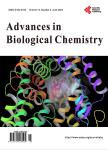Determination of bacterial viability by selective capture using surface-bound siderophores
Determination of bacterial viability by selective capture using surface-bound siderophores作者机构:Biosciences Division Los Alamos National Laboratory Los Alamos USA Chemistry Division Los Alamos National Laboratory Los Alamos USA ISR3 Space Data Systems Los Alamos National Laboratory Los Alamos USA
出 版 物:《Advances in Biological Chemistry》 (生物化学进展(英文))
年 卷 期:2012年第2卷第4期
页 面:396-402页
学科分类:1002[医学-临床医学] 100214[医学-肿瘤学] 10[医学]
主 题:Siderophores Viability Detection Desferrioxamine Fluorescence Microscopy Self-Assembled Monolayers
摘 要:A significant challenge in bacterial detection is the identification of viable bacteria over debris, specifically post decontamination. Of increasing concern are antibiotic resistant strains that require accurate and rapid post decontamination analysis. Current strategies are fraught with disadvantages and most of them are not selective for viable bacteria. However, bacteria are critically dependent upon iron sequestration, synthesizing and releasing siderophores (SDPs) to tightly bind iron, with the subsequent uptake of iron bound SDPs. This is a highly conserved process that occurs only in intact bacteria. Herein we report a facile method to use bacterial SDPs to selectively and rapidly identify only viable bacteria in complex matrices, and discriminate them from their dead counterparts. Desferrioxamine B (Desf B) tethered to a glass slide is used to specifically capture viable bacteria from a mixture of viable and dead Escherichia coli, as demonstrated by fluorescence microscopy. We re- port both direct conjugation of Desf B on thin-film-coated glass slides as well as biotin-streptavidin conjugation strategies, both of which are successful in the said goal. We have analyzed the density of images obtained upon fluorescence staining using edge detection with a Canny edge detector. This novel application of a software analysis tool originally developed for satellite imaging to biological staining allows for accurate quantitation of observed data.



